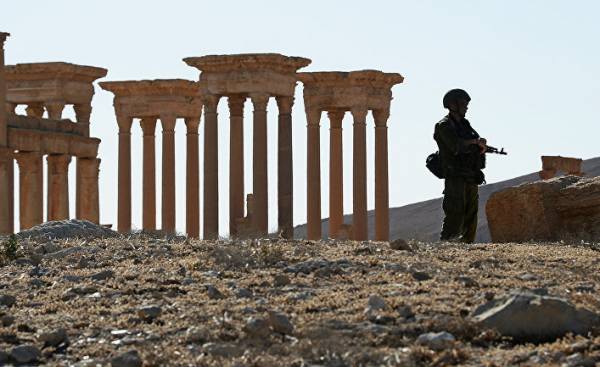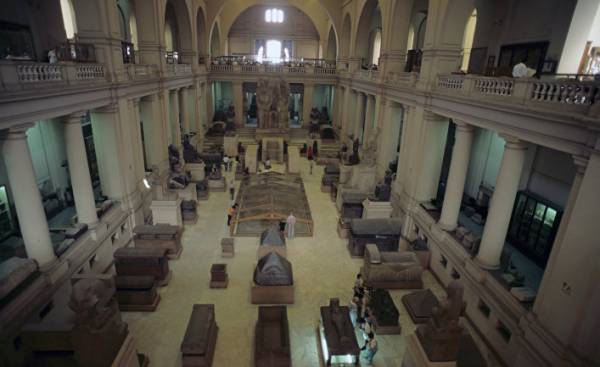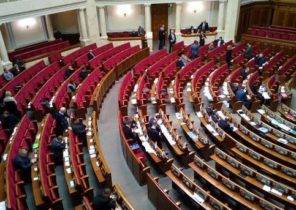
Iraq is a country of museums which had been stolen, and stolen the large number of archaeological artifacts — 3100. As every year celebrate the international day of museums, when there is vandalism and looting? Islamic monuments in Syria were not saved, the Holy ascetics of the prophet Muhammad was blown up by members of the Islamic state (banned in Russia — approx. ed.). Since 2011, the Syrian monuments and museums, especially museums Louts, always destroying and robbing.
The idea of creating a world day for education and preservation of historical, cultural values and artifacts of the Museum was proposed in 1977 by the General conference ICOM (International Council of museums — approx. ed.), supported by UNESCO. It was proposed each year to select a specific topic of the Museum’s activities. It seems that the most appropriate theme uniting all of the country during the celebration of the International day of museums, is “destruction, devastation, theft and robbery” museums and monuments that have been going on for over two decades. It all started with the invasion of Iraq in 2003, which now is the country most affected by the destruction and theft of Museum values. In addition, this time is the worst period in the history of the country. April 8, 2003 was the last working day for members of the Iraqi national “Museum of Baghdad”, because that’s when the Iraqi army faced the forces of the United States in this historic place, making it easy prey for looters and thieves. Within four days of a gang specializing in the theft of Antiques, emptied the Museum, leaving only large obelisks and statues, which, due to their weight it was impossible to steal.
Iraq’s Museums
Looters ransacked the archaeological store, stole about 3100 artifacts, but 3000 of them were later returned to the Museum. The position of works of art was no better. Was stolen statue of the Sumerian king Eannatum of the state of Lagash, which dates back to 4400 years (Eannatum rules approximately 2450-2425 — approx. ed.). Surprisingly, the United States returned to this historical value. The greatest interest of the stolen items is an original guitar dynasty of Ur, made in the reign of Puabi in 2450 BC, but it is the basic key to create all the string instruments. It was later returned to its strings, but the thieves stole the gold that the instrument was inlaid.
ISIS blows up “Holy forty” and “Green Church” in the governorate of Salah al-DIN
The years go by, and looting remain. Now the looters was superseded by the terrorist group ISIL (banned in Russia — approx. ed.), which continues to plunder the museums of Iraq. In June 2014, just a few days after the ISIL captured Mosul, was destroyed the statue of Abu Tammam, author of collection of poems of Hamas. At the end of September 2014 in the city of Tikrit was blown up “Shrine of the forty,” in which were buried the remains of 40 soldiers of the army of the Caliph Omar Ibn al-Khattab, who fought about the year 638 of the Mada’in. In 2014, the face of the earth was wiped out “Green Church” was built around 1300 in Tikrit, the largest city in the governorate of Salah al-DIN North of Baghdad. In addition, in the same 2014 was blown up a historical monument — the mosque of Sultan Weis, located in the centre of Mosul.
Library Of Mosul
2015 was one of the worst years in the history of Iraq. ISIS captured the city of Mosul. In February 2015 the world witnessed the disaster that befell the Museum in Iraq: militants of the terrorist group published a video, which showed the scale of destruction the most important historical monuments of this country. In addition, those staffing the terrorists undermined statues and trampled them underfoot. Moreover, ISIL blew up the library of Mosul, and burnt many books, however, first selected the best of them and took. The same thing they did in the ancient city of Hatra in Northern Iraq in March of 2015 and in the same month in the city of Nimrud. UNESCO condemned the terrorist group for such actions, calling them a “war crime”. In July of the same year they blew up the Shrine of the prophet Jonah.
Museum in Yemen
To Yemen, “happiness” came when in 2015 the military operation “Storm”, during which destroyed a huge number of historical monuments. Archaeological sites of Yemen was shelled and bombed by Houthis on the one hand, and the Arab coalition airstrikes on the other side. The country’s national Museum, founded in 1912 during the reign of Fadl bin Ali al-Abdali (Sultan existed at the time of the Sultanate of Lahej in the South of Yemen — approx. edition), was destroyed.
In this country there are historical sites built over four thousand years ago: palaces, temples, statues, castles, fortresses and so on. The most famous of them are the Sabean Kingdom in Marib, the Kingdom of main, in al Jawf, Kingdom Catalan in the valley of Behan, Ausan in the valley of Markha and the ancient city of Shabwa in the state of Hadramawt. According to the official statistics data published by the Main Directorate of antiquities and museums in Yemen, as a result of wars and armed conflicts many archaeological artifacts have been stolen, and objects destroyed or severely damaged.
,
Palace arms
Among the stolen and destroyed historical monuments of Yemen, located in Sana’a governorate, who can forget the “Palace arms”, located on the ruins of the famous Palace Ghumdan, which is considered one of the oldest architectural wonders of its time. In it there lived the last king of Himyarite Kingdom — king Sayf Ben DHI Yazan, who ruled in the VI century. The Palace was destroyed, but some historic buildings in the old city of Sana’a and the village of Attan was damaged as a result of continuous bombardment of the capital. Mosque and tomb of ‘ Abd ar-Razzaq as-Sanani located in Hamra governorate, in the village of Dar al-hade, was also completely destroyed.
After aerial bombardment and destruction of the old citadel of al-Kahera built in the era Sulayhids (1045-1138), began the destruction of war monuments in TA’izz. Throughout history, the fortress has played an important role in political and military processes. So, there were Iubiti after his accession to the throne in Yemen in the year 1173. In addition, she was DOLICA Rasulid dynasty, ruled the country in the period from 1229 in 1454. As for the governorates of Aden, there was a ruined historic fortress Syrah, built in the XI century, and the building of the mosque Dzhokhar was heavily damaged. The old town of the governorate of saada came under aerial bombardment, as well as built in the IX century, one of the oldest and most important mosques — the mosque of al-Hadi.
#Tanana national #museum valuables turned to ashes after catching fire of #Houthi fighters. #Yemen pic.twitter.com/cKzupsSYB0
— Mohammed al-Qadhi (@mohammedalqadhi) February 3, 2016
The value of museums was reduced to ashes after an attack by Houthis
In addition, destroyed a huge number of museums and historical monuments, and other governorates of Yemen. For example, in al Jawf was ruined wall of the city Barakish, and in Marib wall of the temple Aval Sarah. In the province Addala was destroyed by a wall of Dar al-Hassan, date of construction which dates back to pre-Islamic period.
The pearl of the countries of sham
Since March 2011, the “pearl of the countries of al-sham”, Syrian archaeological treasure, an eyewitness of the events taking place for over five thousand years, was subject to the looting and massive destruction. In the entire region was destroyed more than 300 historical monuments. In 2012, the target of looters and robbers in Syria were the most important archaeological sites, namely, from Hama Museum was looted of ancient weapons, from the Museum of Apamea were stolen a marble statue. Furthermore, bombed the fortress Kallat al-Madiken located in the province of Hama, and the historical town of Ibla, in the governorate of Idlib, has been completely looted. In the suburbs of Palmyra is the castle of Ibn Maan, built during the Roman Empire, which was also destroyed. The Museum of HOMS, as well as the folk art Museum in Aleppo and the Museum of the city of Gabes, located between Aleppo and Hama were looted by looters and armed groups. The case of the latter, then it was stolen more than 30 pieces of art, but, fortunately, none of mosaics, beautifully lined on its walls were not damaged.
© RIA Novosti, Mikhail Alaeddin | go to photobacteria architectural complex of Ancient Palmyra in the Syrian province of HOMS
In addition, the Roman theatre in Palmyra was built about two thousand years ago, was destroyed by ISIS. In may 2015, after the capture of the city square historical building, the militants killed a huge number of people. In June of the same year, the world has suffered several irreparable losses: the destruction of the Shrine of Muhammad Ibn Ali, a descendant of the family of Ali Ibn Abu Talib, and the Shrine of Abu Bakha Ad-DIN. In August 2015, ISIS militants blew up a famous temple in Palmyra.
The Egyptian Museum
Since January 2011 in Egypt was destroyed and looted a huge number of museums, including the Museum in Tahrir square and the Museum of Mallawi, a huge part of exhibits and relics which were destroyed during the revolution and the “massacre” of 14 August 2013 (the defeat of camp of supporters of ousted President Mohamed Morsi’s military — approx. ed.). In addition, during these events because he had stolen a large part of the archaeological artifacts and the facades of the buildings were severely damaged. In 2014, during the attack on the building of the security Department were destroyed Islamic Museum in Cairo, and the most important exhibits were irretrievably lost.
 © RIA Novosti, Boris Babanov | go to photobacteria Museum
© RIA Novosti, Boris Babanov | go to photobacteria Museum
18 Mar 2015 in Tunis attacked by terrorists were attacked the national Museum of Bardo, which is the second largest Museum in the world after the Museum of Zigma in Turkey, which contains large-scale Roman mosaic. It should be noted that outside of the Arab world also there are terrorist attacks. So, on February 3 last year, the world witnessed the attacks on Paris.
The question is how can every year to celebrate the international day of the Museum on the background of the vandalism and looting? Isn’t that UNESCO should engage in the protection of architectural monuments, and the return of stolen artifacts?
It should be noted that the word “Museum” comes from the Greek word Musa. The first such institution was founded by Ptolemy I Sotera, the founder of the dynasty of the Ptolemies in Alexandria, the “bride” of the Mediterranean sea in 280 BC, In the Museum were collected goddesses of beauty, music and poetry, as well as the latest inventions in the field of medicine. It was later converted into a Greek school. Initially, the Museum was created as a temple of the Muses, and the name of the goddess of art was Musa, it is from here originates the word “music” sounding about the same in all languages.







